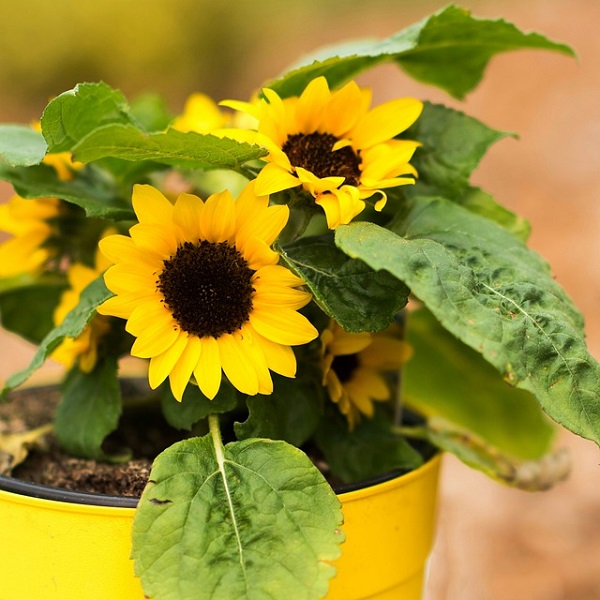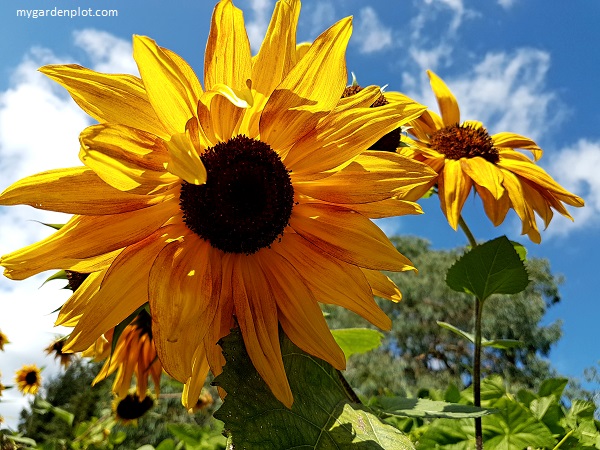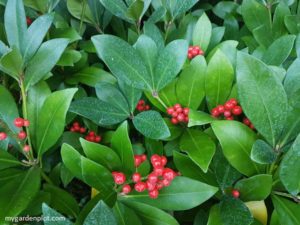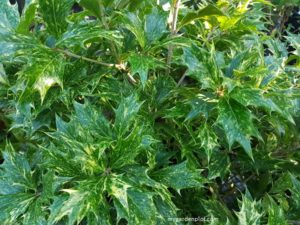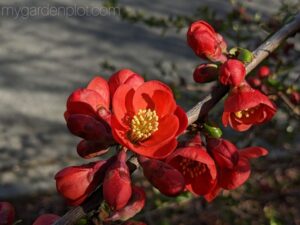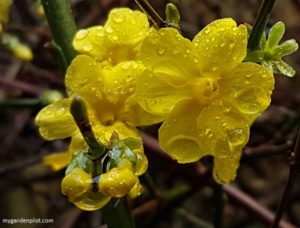About Helianthus annuus (Sunflowers)
A strong mid-summer performer lasting through to early fall, the Helianthus annuus (Common Sunflower) has bold, brilliant yellow, large single flower that literally stands out. There is no subtlety in its presence. The impressive sunflower with its vivid yellow flowerhead is the extravert in the garden. But even the smaller sunflower branching varieties stand out. Have fun learning more about where to plant and how to grow and care for your sunflower plant. Plus, see tips below on harvesting seeds, buds, petals and roasting those delicious sunflower seeds.
Growing sunflowers benefit organic gardens as they lure many pollinators and beneficial insects, and their seeds are attractive to birds and several other critters (more below). And from the kitchen garden perspective, harvesting the nutty flavoured seeds has been popular as they are highly nutritious. While planting the tall common sunflower is usually associated with kitchen gardens, shorter and smaller-flowered varieties are suitable to plant in smaller summer garden beds. Drought tolerant, easy-care and with plenty of sunshine, it is rather effortless growing sunflowers.
All sunflower varieties flower from mid-summer and continue through to early autumn. All have edible seeds, buds and petals. There are new varieties with red, orange and white blooms. Keep in mind that some of these new varieties may be pollen-less, such as the double-petal flowers, but they make beautiful cut flowers. Whatever your preference, be it for seed harvesting, cut flower or for a picturesque garden bed, this guide on how to plant and care for sunflowers plants will show you how easy it is to grow by seed or plant a store-bought young plant. Read more below about recommended sunflowers for container gardening.
It is true, those large flowerheads do turn and follow the movement of the sun throughout the day. At night they turn back east, waiting for the sun to rise again
Sunflowers At A Glance
Type: Annual And Perennial
Location: Full Sun
Blooming Season: Summer
Size: Varies – from dwarf size to over 3.6 metres (12 feet) tall
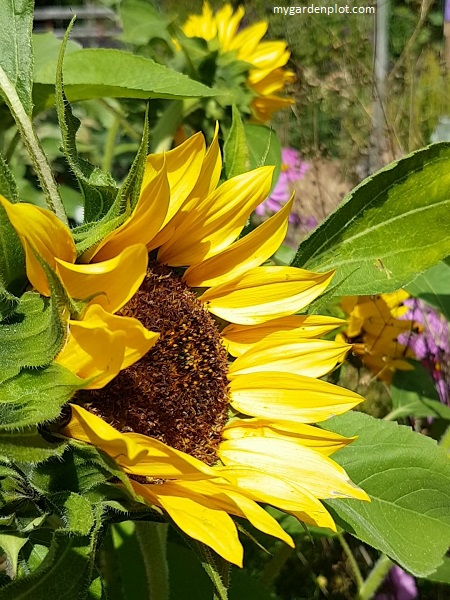
How To Plant And Grow Sunflowers
Once the danger of frost is gone, it is easy to sow seeds directly in your garden. In the Pacific Northwest, this is usually between mid-April to mid-May. They need a location that receives full sun. Keep in mind that the sunflower plant will need space to grow, especially the tall Helianthus annuus species. Plant the seeds about 2.5 cm (1 inch) deep. Smaller varieties need to be spaced about 15 cm (6 inches apart), while large sunflowers need to be 1 metre (3 feet) apart. With a soil temperature around 21C (70F), germination occurs within two weeks. Sunflowers are fast-growing plants. Having said that, if you prefer to purchase a young sunflower plant rather than start from seed, these are easy to get from most garden centres from springtime.
Sunflowers love heat and tolerate most soil conditions but thrive best in well-draining, fertile, slightly acidic soil. A sheltered site from strong winds is ideal. If the location is well-draining, but the soil is not optimum, mix in rich organic matter and bone meal or general-purpose slow-release fertilizer into the soil at the start of the season. Follow with a booster fertilizer application once the flowerhead appears.
It is essential that the soil not be compact as sunflowers have a long taproot – getting root-bound will hinder growth and stability, especially with the large sunflowers. The tall varieties will need support with staking, especially in windy sites.
Water regularly during the growth stage. Once established, water occasionally but deeply.
Pests And Diseases That Affect Sunflowers
Sunflowers are generally trouble-free. However, slugs and snails will munch on young seedlings. Protect by putting snail and slug bait around the area. Aphids and powdery mildew can trouble sunflowers.
If you are growing sunflowers for harvesting the seeds, the biggest problem will be the birds and squirrels going for the seeds of mature flowerheads. Needs to be said that if you have deer in your area, they will also be attracted to sunflowers.
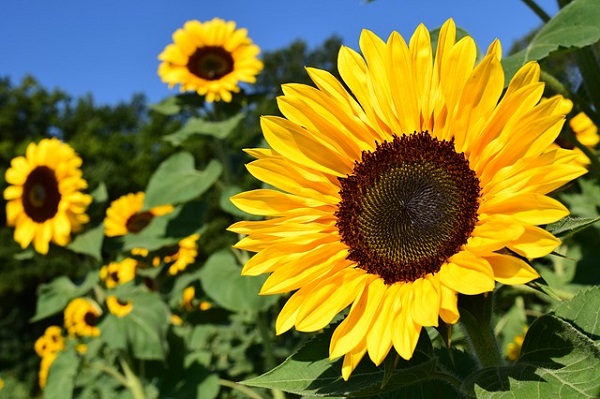
RELATED TOPIC: Popular Plants With Daisy-Like Flowers For The Garden
Harvesting Seeds, Buds, Petals And Roasting Sunflower Seeds
The Helianthus annuus sunflower, when ready, will begin to bend over when the flowerhead starts to become mature and heavy with ripe seeds. The seeds may start to drop out. Cut the flowerhead and hang in a warm, dry location away from birds or squirrels – and raccoons and mice for that matter. After all, we all want the same thing – those tasty seeds. Once the flowerheads have dried, rubbing the surface will dislodge the seeds easily.
How To Cook And Prepare The Edible Flowers:
Roasted sunflower seeds are delicious. Spread the seeds on a roasting pan and bake in the oven for 10-15 minutes at 200C (400F). Once shelled can be eaten as snacks or delicious added to salads for an extra nutritious crunch.
The sunflower petals can add a summery splash of colour to salads, or the petals can be added to couscous, quinoa, or rice. The sunflower bud can be steamed or boiled – they have an artichoke-like flavour. But more often than not, harvesting sunflower flowerheads for roasting seeds are most popular.
Recommended Sunflowers Varieties
There is a good selection of sunflower plants available, varying in size and flowerhead form. For harvesting seeds or just its grandeur stature, The ‘Russian Mammoth’ sunflower (3 metres tall) or the ‘Giganteus’ sunflower (3.6 metres tall) is sure to please. Both of these are very tall and offer the classic towering stem and sunflower seeds for roasting.
A nod must be given to the H. annuus ‘Original Sun’, which is the origin of all sunflower varieties. It also stands tall at 3 metres (10 feet) with multiple flowered branches. The seeds are much smaller, resembling grain.
Suitable For Planting In A Pot:
For container gardening, the ‘Suntastic’ (50 cm tall) has marvellous, bright yellow blossoms. And the ‘Music Box’ (60 cm tall) flowers, also a favourite, vary in colour with yellows, cream and red-browns. They are more suitable to planting in pots or small garden borders due to their smaller size. These dwarf varieties produce great flowerheads as cut flowers. There is also the ‘Teddy Bear’ (60 cm tall) with fluffy, double yellow flowers that is also very suitable for containers and, due to their low pollen, perfect as cut flowers.
